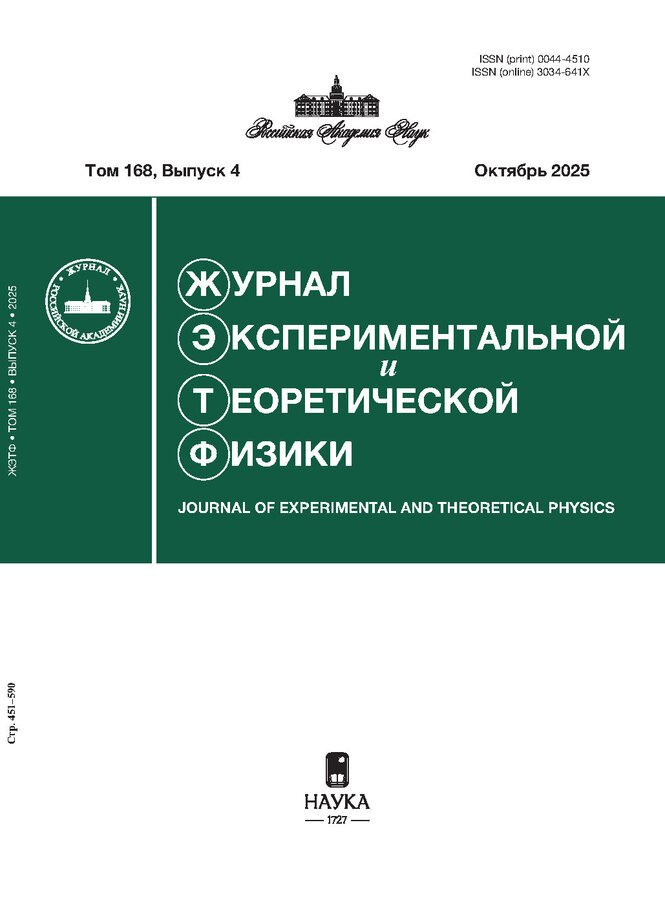Two-Dimensional Magneto-optical Trap for Producing a Flux of Cold Thulium Atoms
- Authors: Yaushev M.O.1,2, Mishin D.A.1, Tregubov D.O.1, Provorchenko D.I.1, Kolachevskiy N.N.1,3, Golovizin A.A.1
-
Affiliations:
- Lebedev Physical Institute, Russian Academy of Sciences
- Moscow Institute of Physics and Technology (State University),
- International Center of Quantum Technologies
- Issue: Vol 164, No 2 (2023)
- Pages: 204-213
- Section: Articles
- URL: https://rjeid.com/0044-4510/article/view/653668
- DOI: https://doi.org/10.31857/S0044451023080060
- EDN: https://elibrary.ru/HZODYX
- ID: 653668
Cite item
Abstract
We propose a design of a source of cold thulium atoms based on a 2D magneto-optical trap and perform numerical simulation of its operation. Optimal parameters of cooling radiation and the magnetic field are determined; it is shown that for a total radiation power of 50 mW and an atomic oven temperature of 800 K, the proposed configuration can provide a flux of 4 × 108 cold atoms per second, and with an increase of the oven temperature, the flux can reach ~ 1011 atom/s. Such a source can be used for building frequency standards as well as in experiments with quantum simulators and the Bose–Einstein condensate.
About the authors
M. O. Yaushev
Lebedev Physical Institute, Russian Academy of Sciences;Moscow Institute of Physics and Technology (State University),
Email: iaushev.mo@phystech.edu
Moscow, 119991 Russia;Dolgoprudny, Moscow oblast, 141701 Russia
D. A. Mishin
Lebedev Physical Institute, Russian Academy of Sciences
Email: iaushev.mo@phystech.edu
Moscow, 119991 Russia
D. O. Tregubov
Lebedev Physical Institute, Russian Academy of Sciences
Email: iaushev.mo@phystech.edu
Moscow, 119991 Russia
D. I. Provorchenko
Lebedev Physical Institute, Russian Academy of Sciences
Email: iaushev.mo@phystech.edu
Moscow, 119991 Russia
N. N. Kolachevskiy
Lebedev Physical Institute, Russian Academy of Sciences;International Center of Quantum Technologies
Email: iaushev.mo@phystech.edu
Moscow, 119991 Russia;Moscow, 121205 Russia
A. A. Golovizin
Lebedev Physical Institute, Russian Academy of Sciences
Author for correspondence.
Email: artem.golovizin@gmail.com
Moscow, 119991 Russia
References
- K. Bongs et al., Nature Rev. Phys. 1, 731 (2019).
- C. Janvier et al., Phys. Rev. A 105, 022801 (2022).
- V. M'enoret et al., Sci. Rep. 8, 1 (2018).
- I. Bloch, J. Dalibard, and S. Nascimbene, Nature Phys. 8, 267 (2012).
- F. Sch¨afer, T. Fukuhara, S. Sugawa, Y. Takasu, and Y. Takahashi, Nature Rev. Phys. 2, 411 (2020).
- X. Wu et al., Chinese Phys. B 30, 020305 (2021).
- T. Graham et al., Nature 604, 457 (2022).
- S. M. Brewer et al., Phys. Rev. Lett. 123, 033201 (2019).
- S. D¨orscher et al., Metrologia 58, 015005 (2021).
- T. Bothwell et al., Metrologia 56, 065004 (2019).
- M. Takamoto, Y. Tanaka, and H. Katori, Appl. Phys. Lett. 120, 140502 (2022).
- J. Grotti et al., Nature Phys. 14, 437 (2018).
- S. Wang et al., Opt. Express 28, 11852 (2020).
- J. Cao et al., Appl. Phys. Lett. 120, 054003 (2022).
- A. Golovizin, D. Tregubov, D. Mishin, D. Provorchenko, and N. Kolachevsky, Opt. Express 29, 36734 (2021).
- S. Pollock, J. Cotter, A. Laliotis, and E. Hinds, Opt. Express 17, 14109 (2009).
- D. S. Barker et al., Phys. Rev. Appl. 11, 064023 (2019).
- G. J. Dick, Proceedings of the 19th Annual Precise Time and Time Interval Systems and Applications Meeting, 133 (1989).
- D. Pan, B. Arora, Y.-m. Yu, B. Sahoo, and J. Chen, Phys. Rev. A 102, 041101 (2020).
- M. A. Norcia et al., Phys. Rev. X 8, 021036 (2018).
- G. Biedermann et al., Phys. Rev. Lett. 111, 170802 (2013).
- H. Katori, Appl. Phys. Express 14, 072006 (2021).
- D. Mishin, D. Provorchenko, D. Tregubov, N. Kolachevsky, and A. Golovizin, Appl. Phys. Express 14, 112006 (2021).
- A. Golovizin et al., Nature Commun. 10, 1724 (2019).
- D. A. Mishin et al., Quant. Electr. 52, 505 (2022).
- A. A. Golovizin et al., Nature Commun. 12, 5171 (2021).
- E. Fedorova et al., Phys. Rev. A 102, 063114 (2020).
- M. Barbiero et al., Phys. Rev. Appl. 13, 014013 (2020).
- M. Kwon et al., Rev. Sci. Instrum. 94, 013202 (2023).
- A. A. Golovizin et al., Instrum. Exp. Techn. 65, 896 (2022).
- Д. Д. Сукачев, дисс канд. физ.-матем. наук, Физический институт им. П. Н. Лебедева РАН, Москва (2013).
Supplementary files











